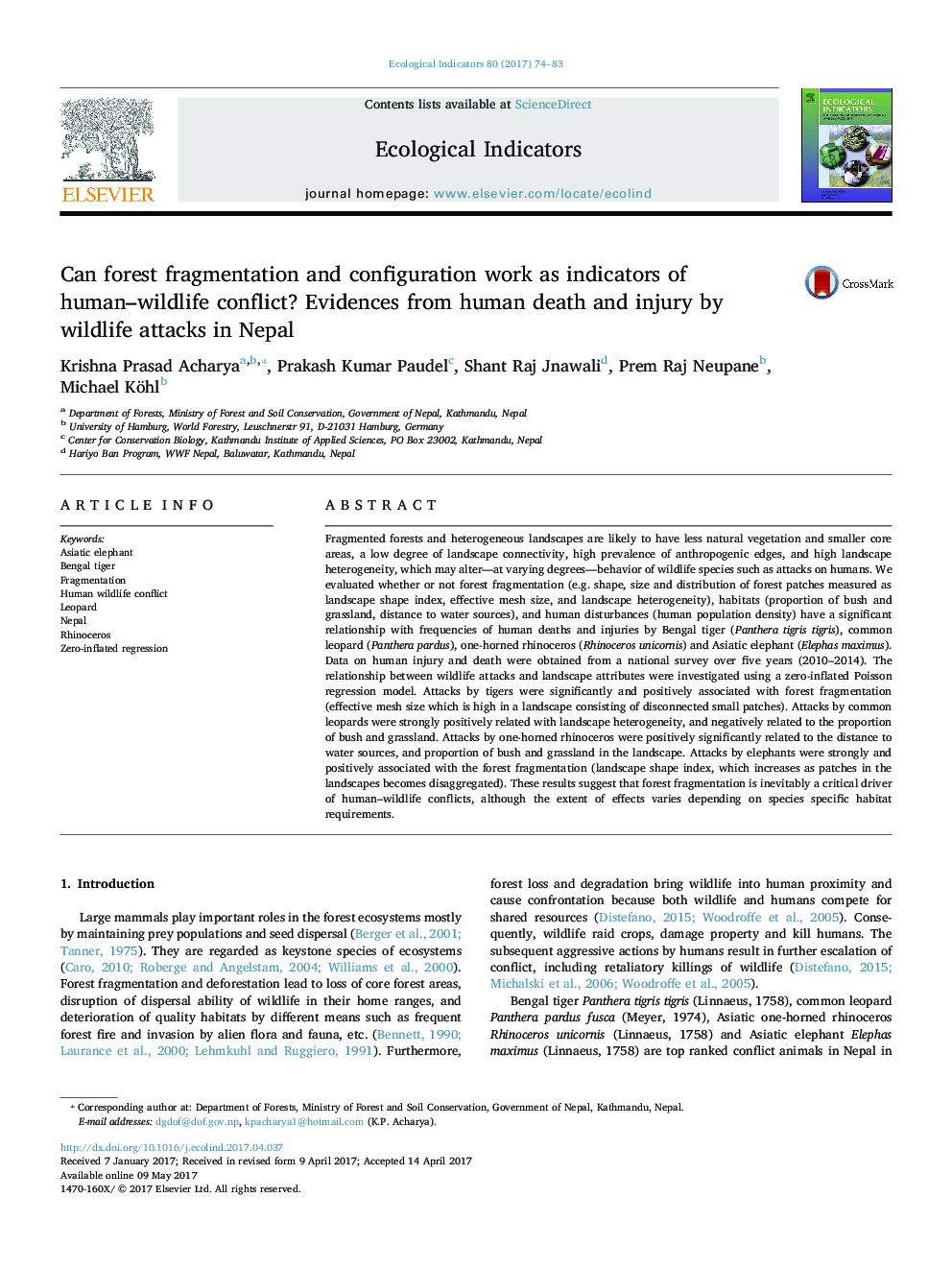| کد مقاله | کد نشریه | سال انتشار | مقاله انگلیسی | نسخه تمام متن |
|---|---|---|---|---|
| 5741369 | 1617122 | 2017 | 10 صفحه PDF | دانلود رایگان |
- Forest fragmentation has been used as a proxy for quality of habitats.
- The focus was on mammals of Nepal: tiger, common leopard, rhinoceros and elephant.
- Fragmented forests are likely to have more human-wildlife conflict.
- Results provide useful information for long-term conservation of endangered wildlife.
Fragmented forests and heterogeneous landscapes are likely to have less natural vegetation and smaller core areas, a low degree of landscape connectivity, high prevalence of anthropogenic edges, and high landscape heterogeneity, which may alter-at varying degrees-behavior of wildlife species such as attacks on humans. We evaluated whether or not forest fragmentation (e.g. shape, size and distribution of forest patches measured as landscape shape index, effective mesh size, and landscape heterogeneity), habitats (proportion of bush and grassland, distance to water sources), and human disturbances (human population density) have a significant relationship with frequencies of human deaths and injuries by Bengal tiger (Panthera tigris tigris), common leopard (Panthera pardus), one-horned rhinoceros (Rhinoceros unicornis) and Asiatic elephant (Elephas maximus). Data on human injury and death were obtained from a national survey over five years (2010-2014). The relationship between wildlife attacks and landscape attributes were investigated using a zero-inflated Poisson regression model. Attacks by tigers were significantly and positively associated with forest fragmentation (effective mesh size which is high in a landscape consisting of disconnected small patches). Attacks by common leopards were strongly positively related with landscape heterogeneity, and negatively related to the proportion of bush and grassland. Attacks by one-horned rhinoceros were positively significantly related to the distance to water sources, and proportion of bush and grassland in the landscape. Attacks by elephants were strongly and positively associated with the forest fragmentation (landscape shape index, which increases as patches in the landscapes becomes disaggregated). These results suggest that forest fragmentation is inevitably a critical driver of human-wildlife conflicts, although the extent of effects varies depending on species specific habitat requirements.
Journal: Ecological Indicators - Volume 80, September 2017, Pages 74-83
